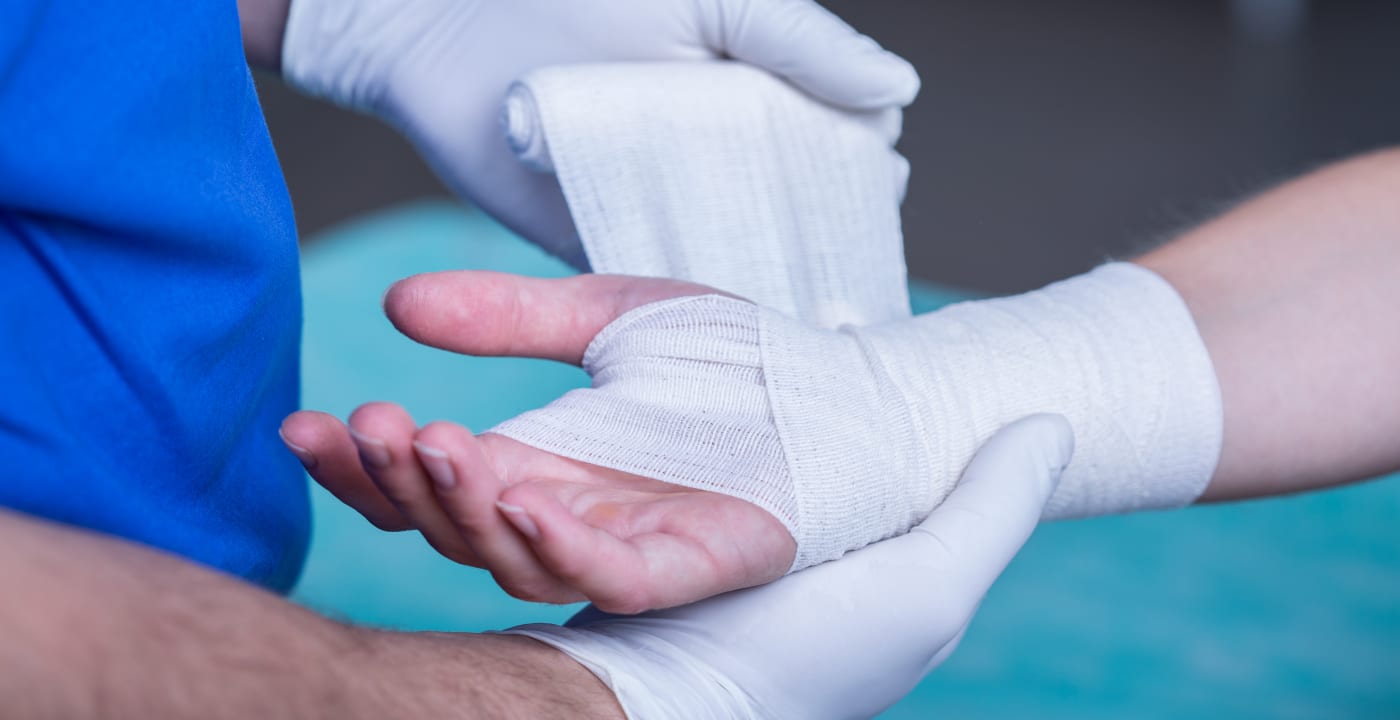Wrist injuries: When to see a doctor

A slip on an icy patch can bruise more than your ego.
As you instinctively put your arms out to break your fall, it’s your wrist that usually takes the brunt of the impact, often leading to a sprain or a fracture in this important joint, says MultiCare orthopedic surgeon Issei Komatsu, MD.
Knowing when your wrist injury can be handled at home and when to seek medical attention is crucial to healing and maintaining full function of your wrist, Dr. Komatsu says. An unhealed wrist injury can lead to arthritis in the joint, which may leave you with significant mobility issues.
When to seek medical attention
If you have severe pain, rapid and severe swelling, numbness or tingling in the hand, or an obvious deformity in your wrist after a fall, it’s a good idea to get immediate help, Dr. Komatsu says.
Likewise, if the pain or swelling gets worse, it’s time to get it checked out.
With a series of ligaments, tendons, cartilage and eight small bones (the carpal bones), along with the connection to your forearm bones, the wrist is a complex structure. When that structure takes the full force of a fall, a lot can happen.
Fortunately, most wrist injuries are minor. But for those that aren’t, orthopedic surgeons like Dr. Komatsu get called in to help.
Common wrist injuries
Fractures. The most common wrist injury after a fall that Dr. Komatsu sees is a distal radius fracture. Your forearm has two bones: the radius on the thumb side and the ulna on the pinky side. Most wrist fractures involve the radius bone about an inch from the end.
“Even if there is no fracture, patients can possibly sustain ligament injury,” Dr. Komatsu explains.
Sprains. A sprain, unlike a fracture, involves the tendons and ligaments rather than the bones.
A common sprain location is the triangular fibrocartilage complex (TFCC), which consists of ligaments and cartilage that connect the radius and ulna to each other and to the small bones in your wrist. It gives you the ability to twist your wrist and grip things, so an injury or sprain there will make your wrist feel weak and unstable.
Another common injury after a fall is a tear or sprain in the scapholunate ligament, which connects two of the small bones in the wrist.
Whether the injury is a fracture or a sprain, non-surgical treatment is usually considered as the first choice, Dr. Komatsu says. If the broken bones are in reasonable alignment, patients can usually heal with just a cast to immobilize the area.
With sprains, a combination of rest, anti-inflammatory medications and hand therapy are usually his first-line treatments. But when those don’t do the trick, Dr. Komatsu says he can usually complete surgical repair arthroscopically, which is minimally invasive.
Another significant cause of wrist injury is repetitive stress. As with a traumatic injury from a fall, Dr. Komatsu says any tingling, numbness or severe pain that doesn’t improve after a few weeks warrants medical attention. The difference is that instead of heading to an emergency department, you simply schedule a visit with your primary care doctor or other health care provider. They may start with conservative treatments or refer you to an orthopedic specialist.
Regardless of what’s causing your wrist pain, there’s no need to suffer endlessly because there are treatments that can help, says Dr. Komatsu.
MultiCare Orthopedics & Sports Medicine is staffed by a wide range of musculoskeletal experts to help treat your hand, wrist and arm pain.




